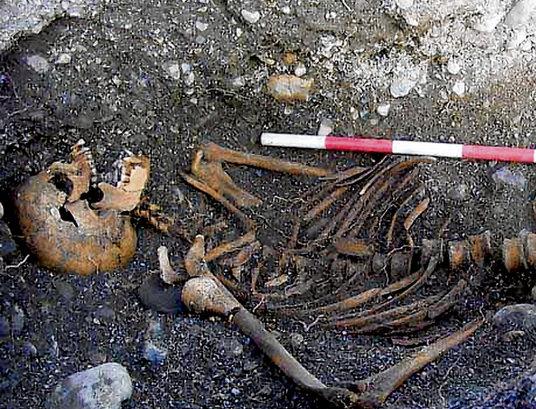Skeleton found of man killed by arrowhead 1,000 years ago
Lorna Siggins
Source - http://www.irishtimes.com/newspaper/ireland/2011/1124/1224308056314.html
The skeleton of a young man killed 1,000 years ago by an iron arrowhead found in his skull has been unearthed by archaeologists in east Galway.

The shallow grave with the man’s body was discovered by a farmer during recent quarrying work near Newcastle village.
During further examination, the iron arrowhead which claimed his life was retrieved from inside his skull.
Traces of an underground passage dating from the ninth century have also been identified in the same section of quarry face in the townland of Tisaxon near Newcastle, according to archaeologist Martin Fitzpatrick of Arch Consultancy Ltd.
Mr Fitzpatrick’s team was called in after the find was reported to the Department of Arts, Heritage and the Gaeltacht. Archaeological work was co- funded by that department and the Department of the Environment.
Mr Fitzpatrick estimated the man was aged between 17 and 25, and may have been buried after a battle in this esker area. “The fact that he was lying east-west indicates that he was buried, and it is clear that he had already died of his injury,” he said.
The man was placed on his side in a crouched position. His feet are missing – possibly removed inadvertently during mechanical excavation or during slippage of the quarry face.
Osteoarchaeologist Caoimhe Tobin confirmed the head wound was inflicted by a small iron arrowhead of about four centimetres in length, and preliminary analysis suggests it dates back to the ninth or 10th century.
Mr Fitzpatrick said the passage was the “creep” of a souterrain or underground chamber used for refuge and storage – often associated with ring forts from the ninth century on.
“While there is no ring fort associated with this souterrain, the ecclesiastical site of Templemoyle lies to the immediate east,” he said.
Templemoyle has an early ecclesiastical enclosure, a well, church and cemetery.
Since 1952, burials have been uncovered during quarrying for sand and gravel in this locality. In 1979 a grave slab with the inscription “Oroit ar maelpoil” and a large bronze-coated iron hand bell dating between the seventh and ninth centuries were discovered.